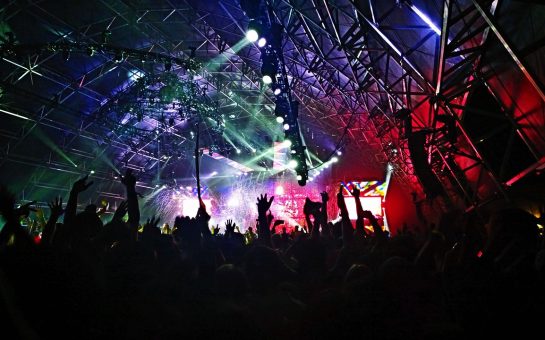A Cold War relic that lies under the city centre streets, what secrets does Manchester’s very own nuclear bunker hold?
The Guardian Exchange tunnels have lay virtually empty for almost 60 years since they were built in the 1950s – fuelling radioactive rumours of shadowy activities 200ft below the surface.
One of three tunnels of its kind – with Birmingham’s Anchor and London’s Kingsway exchanges also constructed at the same time – the £2million build (£61million in today’s money) has been the subject of conjecture ever since.
Far from the Dr Strangelove-esque paranoia of hidden bases and covert operations, the tunnels have continued to play a key role even after the Berlin Wall’s fall – in communication.
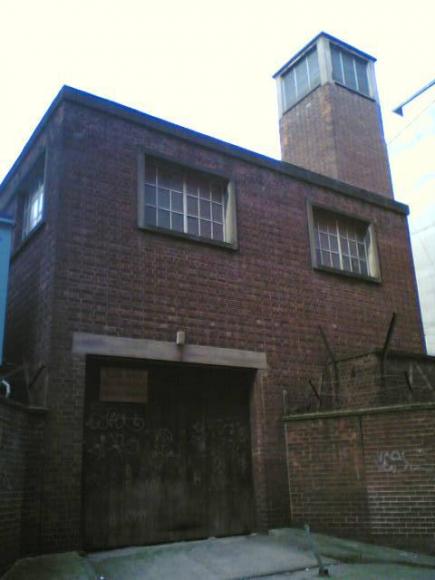
UNTOUCHED: The derelict door to the depths (©hugovk with thanks)
Now the target of myths, conspiracy theories and other crackpot ideas of what the tunnels contain, Dr Martin Dodge, a Senior Lecturer at the University of Manchester’s School of Geography, is asking whether it is a case of subterranean subterfuge or a load of hot air.
In his talk Mapping Manchester’s Cold War Tunnels, Martin, who has repeatedly attempted to contact owners British Telecom (BT) to lift the lid on the facility, is hoping to dig deeper into the mystery surrounding the concrete caverns which were completed in 1958.
But he warns that any ideas about underground espionage may be fantasy and could fall flat at DEFCON 5 rather than escalating to the mutually assured destruction of the truth.
“It would probably be quite boring if you went down there to be honest,” said Martin.
“There is only so much I can find out.
“But people know it’s there. BT will tell you it is there, but they won’t tell you anything about it.”
With claims that the tunnels were built by Polish prisoners of war who were not told what they were working on at the time, the secret project was the subject of a shadowy birth that fuelled endless theories.
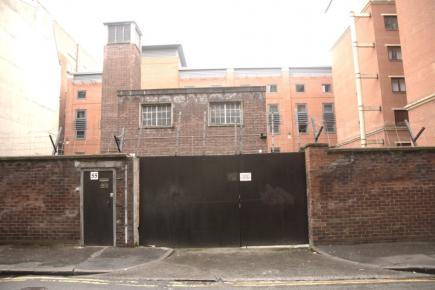
ENTER IF YOU DARE: The sealed off George Street entrance is just one of many (©Stuart Grout with thanks)
One of the most enduring theories is that the tunnels remain reserved for ‘Manchester’s elite’ in the event of an attack on the surface.
But Martin insists that the notion is a far-fetched one.
“It’s not like there would be a big, shiny door that says ‘do not enter’ that BT would stop you from seeing behind.
“And I don’t think the Prime Minister is heading down there if there is a gas attack in London.
“In the age of conspiracies about secret spaces and who killed Diana and The X-Files, I think it’s a very dull space that is a bit unsafe and BT just don’t want the hassle.”
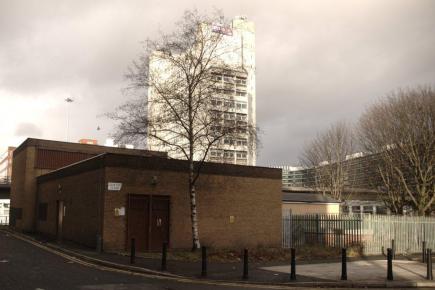
DOOR TO NOWHERE: A covert access point to the tunnels (©Stuart Grout with thanks)
The ‘great irony’ of the Guardian Exchange tunnels is that they were completely outdated by the time they were completed.
Built in response to the atomic threat after the US devastated Hiroshima, Britain was falling behind in the arms race between America and the USSR and the tunnels were susceptible to the newer hydrogen bombs that were the global death-dealing weapons of choice.
If the conspiracy theories are true, Sir Richard Leese and his pals would do well to head elsewhere to survive a blast.
“By the time it was finished it was not deep enough or strong enough to keep people safe from hydrogen bombs. By the time it was built the world had moved on,” said the 44-year-old.
“I don’t think being 30 metres under Manchester city centre makes you particularly safer.”
The tunnels are not completely unchartered territory for outsiders and some journalists and heritage tours were allowed to descend into the depths in the 80s and 90s.
But, like the rest of the global political climate, 9/11 changed all that.
“Since 9/11 the police have become much more interested in underground spaces. They are much more wary,” said Martin.
“The underground is a mysterious space. But, I think, if you go down there, there would be no mysteries. It’s just a very boring tunnel now.”
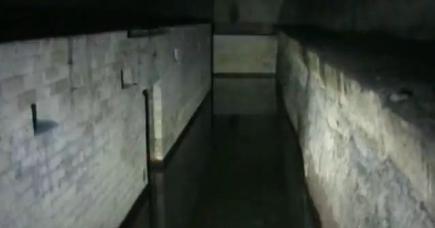
GOING UNDERGROUND: What secrets lie beneath Manchester’s streets? (©stemin84 via YouTube with thanks)
However, MM also spoke to a former BT engineer, who wished to remain anonymous, about his experiences of working in the tunnels to shed light on the bunker’s contents.
“We still used the same old cart that had been there since the tunnels were built,” said the ex-telecoms man, who worked at the Guardian Exchange tunnels in the mid-to-late 90s.
“It was this crap thing that we had to charge manually. The tunnels go on for miles so it was the only way to get cables around.”
Confirming that food stores in the tunnels were replenished every six months, the engineer also suggested that another theory could have been true.
“There are bunkers all over too, including under what is now the Manchester Macdonald hotel,” he said.
“It’s an ex-BT building and I even held a few meetings down there because it’s the only room I could get. Who knows what’s in there now? It’s probably full of beds.”
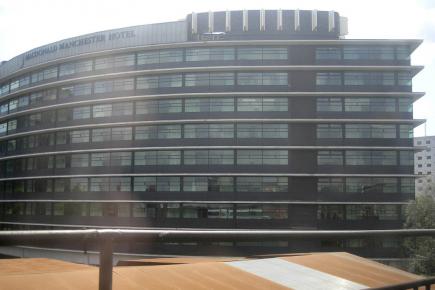
HAVE A NUKE STAY: There is reportedly a bunker located below the Macdonald Hotel (©Sarah with thanks)
No longer considered a particularly strong terror threat, now police are more preoccupied with urban explorers trying to access the inaccessible or cable thieves after a quick payday.
And, as such, the idea that intelligence agencies are either conducting or stopping operations underground seem wide of the mark to Martin.
“I think terrorists are much more likely to head to the Arndale with machine guns than go underground,” he said.
“And if you were the CIA or the NSA it makes no sense to go underground. There is no logic in it and I’m not sure there was any then.
“The spooks would be much better in an anonymous industrial complex off the motorway.”
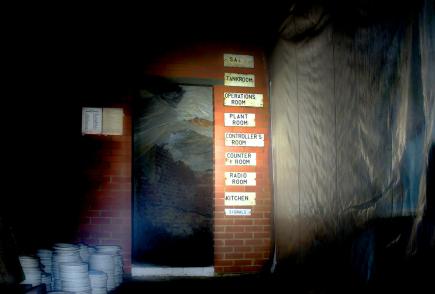
SECRET OPS: There is evidence of Cold War tunnels all over the UK, such as Reigate here (©Dominic Alves with thanks)
A sure sign that the tunnels still play a role in Manchester life came in 2004 when a fire spread through the tunnels – as people as far afield as Sweden felt the force of the flames.
The blaze caused internet companies in the Scandinavian country to suffer an outage as well as emergency services in the local area.
In Macclesfield, two sides of the same street even suffered a different fall-out – with one side losing phone lines while the other remained connected.
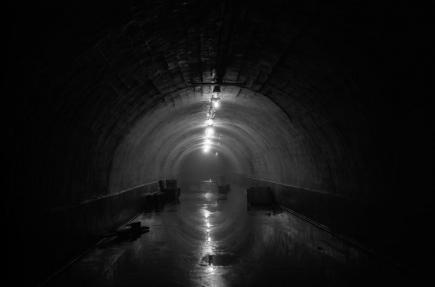
SUBTERRANEAN SOVIETS: They headed underground behind the Iron Curtain too ((©Thomas Claveirole with thanks)
The incident highlighted the mind-boggling connections in communication infrastructure right in the heart of the information age.
“It was quite difficult to deal with,” said map expert Martin, who wrote about the mythical tunnels for 2012’s Infra_Manc exhibition.
“And it was quite an eye opener in terms of how things were connected. You don’t think about it until it fails.
“A fire in a big tunnel like that is always quite a nasty thing. It’s 60 years-old, it’s dark, it’s probably leaking and there are not many exits.”
Dr Martin Dodge will be delivering Mapping Manchester’s Cold War Tunnels at Manchester Central Library on October 2.
Tickets are available here
Image courtesy of Rachel Docherty with thanks



